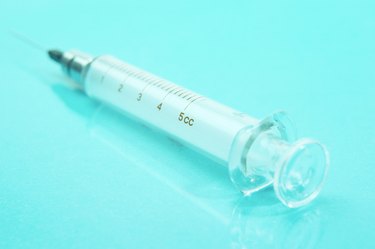
The hydroxy iminodiacetic acid scan, or HIDA scan, is also known as a cholescintigraphy scan. This test measures the function of your liver and gallbladder with a small amount of dye or radioactive tracer. Once the tracer has been injected, a clinician will take pictures of your abdomen at regular intervals over a period of one to two hours. The clinician will evaluate each picture as it develops and tell you if more pictures are necessary. In some cases, followup pictures are taken 12 to 24 hours after the initial scan.
When the HIDA Scan is Used
Video of the Day
The HIDA scan tracks bile. As such, your doctor may use it to evaluate your gallbladder by tracking the flow of bile from your liver to your small intestine. Tracking the flow of bile helps identify bile duct blockage, gallstones, leaky bile duct and other abnormalities associated with your gallbladder. Your doctor may also wish to evaluate the rate at which bile flows from your gallbladder.
Video of the Day
Four-hour Window
You should not eat or drink anything for at least four hours and up to 12 hours preceding your HIDA scan unless otherwise instructed by your doctor. Because your gallbladder is likely to fill after you eat, eating before the scan increases the likelihood that the clinician will not be able to get a clear picture of your gallbladder.
Day Before the Scan
Because gallbladder function is closely tied to fat metabolism, you should not fast the day before your scan. Continue to eat normally until four to 12 hours before the scan or according to your doctor's instructions.
Medication
Some medications, including Pepto-Bismol, interfere with the HIDA scan. Inform your doctor about all of your medications when you schedule the scan. You may be instructed to delay your dose until after the scan is complete.
Pregnancy
If there is any chance that you could be pregnant, let your doctor know. The HIDA scan poses an increased risk to unborn children, and the test may be delayed until your pregnancy is complete.